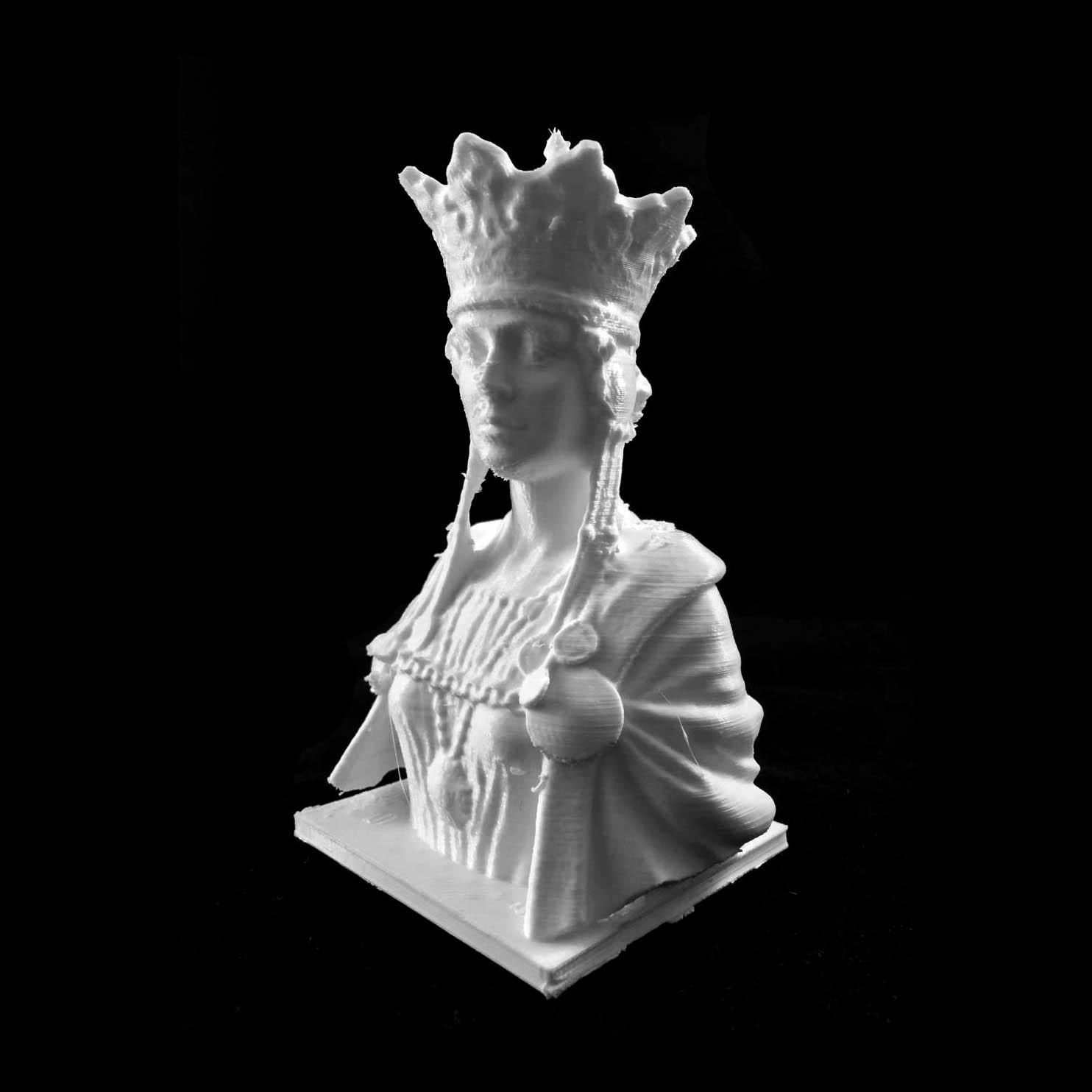
Marie of Romania in Alba Iulia
myminifactory
Princess Marie of Edinburgh, better known as Marie of Romania, was born on October 29, 1875, and died on July 18, 1938. She was the last queen consort of Romania, married to King Ferdinand I. Born into the British royal family, she was given the title Princess Marie of Edinburgh at birth. Her parents were Prince Alfred, Duke of Edinburgh, and Grand Duchess Maria Alexandrovna of Russia. Marie spent her early years in Kent, Malta, and Coburg. After rejecting a proposal from her cousin, King George V, she was chosen as Crown Prince Ferdinand's future wife in 1892. She became popular with the Romanian people between 1893 and 1914. Marie controlled her husband even before his ascension to the throne in 1914, making her one of the most influential royal consorts. During World War I, Marie urged Ferdinand to ally himself with the Triple Entente and declare war on Germany, which he did in 1916. When Bucharest was occupied by the Central Powers, she, Ferdinand, and their five children took refuge in Moldavia. There, she and her three daughters worked as nurses in military hospitals, caring for soldiers who were wounded or suffering from cholera. In 1918, Transylvania united with the Old Kingdom, making Marie queen consort of Greater Romania. She attended the Paris Peace Conference in 1919 to campaign for international recognition of the enlarged Romania. In 1922, she and Ferdinand were crowned in a cathedral built in Alba Iulia, celebrating their status as king and queen of a unified state. As queen, Marie was widely admired both in Romania and abroad. In 1926, she and two of her children traveled to the United States on a diplomatic tour. They were warmly received by the people and visited several cities before returning to Romania. When Ferdinand fell ill and died a few months later, Marie became queen dowager. She refused to join the regency council that ruled over the country under her grandson's minority. In 1930, her eldest son Carol, who had waived his right to succession, deposed his son and took the throne as King Carol II. He removed Marie from public life and tried to discredit her by spreading rumors of her alleged promiscuity. Marie moved away from Bucharest and spent most of her remaining years in the countryside or at her home by the Black Sea. In 1937, she fell ill with cirrhosis and died the following year. After Romania's transition to a socialist republic, the monarchy was criticized by communist officials, who described Marie as a drunkard or a promiscuous woman. However, before the Romanian Revolution of 1989, Marie's popularity recovered, and she was hailed as a model of patriotism. She is remembered for her work as a nurse and her writing, including her critically acclaimed autobiography.
With this file you will be able to print Marie of Romania in Alba Iulia with your 3D printer. Click on the button and save the file on your computer to work, edit or customize your design. You can also find more 3D designs for printers on Marie of Romania in Alba Iulia.
